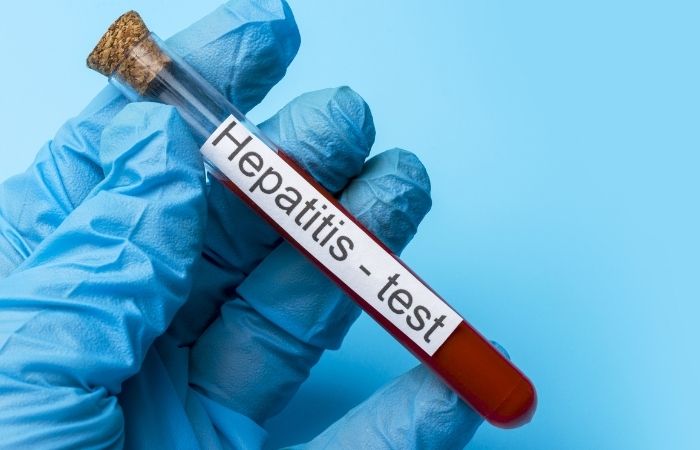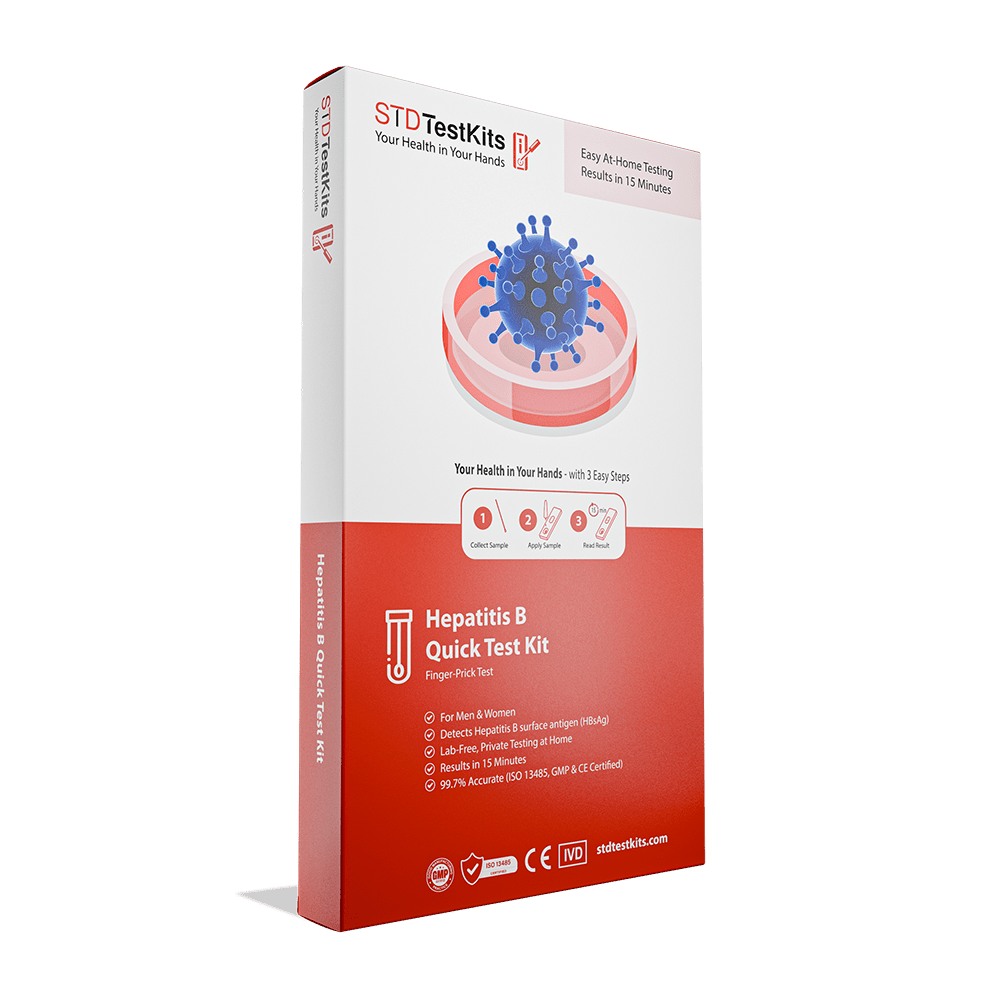HIV Rapid Test Errors and Faint Lines: How to Know What’s Real
Quick Answer: A hepatitis B home test is over 90% accurate if taken after the window period (usually 6–8 weeks post-exposure). Testing too early or misreading faint lines are the most common causes of confusion or false results.
What Hepatitis B Rapid Tests Actually Detect
Let’s start with what you’re even testing for. Most home test kits for hepatitis B are designed to detect the presence of a surface antigen called HBsAg. This antigen shows up in your blood when the virus is active and circulating. It’s kind of like the virus waving a red flag saying, “I’m here.”
But, and this is important, HBsAg doesn’t appear immediately. It typically becomes detectable about 4 to 6 weeks after exposure. If you test before that? You could get a false negative. That doesn’t mean the test is faulty. It means your body hasn’t raised the flag yet. There’s nothing for the test to find.
Some tests (usually lab-based) also look for antibodies like anti-HBc, which tell you if your immune system has reacted to the virus, even if it’s no longer active. But rapid at-home kits focus on the surface antigen only. That makes them great for detecting current infection, if you time it right, but less helpful for confirming past exposure or immunity.

People are also looking for: How Soon After Sex Can You Test for HSV-1 or HSV-2?
Why Timing Changes Everything
The biggest reason people don’t trust their hep B test results? They tested too early.
Imagine this: you had unprotected sex 9 days ago. You’re freaking out, so you grab a rapid test and hope for the best. It says negative. You feel better, but should you?
Probably not. Because at 9 days, there’s a good chance HBsAg hasn’t built up enough to be detected. The test isn’t lying. It’s just not ready yet. That’s why the window period matters so much.
Table 1. Typical accuracy timeline for HBsAg-based home tests. Testing earlier than week 6 increases the risk of a false negative, even with a high-quality kit.
If you tested during the first few weeks after a risky encounter, and your result came back negative, the test may have simply been too early to catch the infection. That doesn’t mean you’re safe. It means you need to test again later, ideally after week 6, and again at week 12 if you’re still concerned.
Mari, 29, used a hepatitis B home test after a one-night stand where the condom broke. She tested on day 10 and got a negative result.
“I remember thinking, ‘Okay, I dodged a bullet.’ I went on like normal. No symptoms, no worries.”
But six weeks later, she started having weird fatigue and dark urine. She went to a clinic. The bloodwork came back positive for hepatitis B. The rapid test hadn’t lied. It had just been too soon.
This is the silent danger of early testing. You do everything “right” by testing, but if you do it too early, you get false comfort. That comfort might stop you from retesting, which is where infections get missed and passed on.
That’s why every test result should come with context. A negative at week 2 doesn’t mean the same thing as a negative at week 8. Same test. Totally different levels of trust.
False Negatives vs False Positives: Which One’s More Likely?
Let’s clear something up: most people worry about false positives, but in home hepatitis B testing, false negatives are far more common. A false positive can happen, yes, but it’s rare, and usually tied to cross-contamination or a test that was expired or stored improperly. In contrast, false negatives happen all the time, especially when users test too early or don’t follow instructions closely.
The reason is simple: home tests detect a certain level of the hepatitis B surface antigen (HBsAg). If your body hasn’t produced enough yet, or if the test is rushed, misread, or interrupted, the antigen might be there, but invisible to the test strip. You’re infected, but your test says “nope.” That’s what makes early negatives so risky.
Let’s say you used a legit, name-brand rapid test. You followed the instructions. You waited exactly 15 minutes, just like it said. But you tested 12 days after your exposure. The result was negative. It feels like a win. But science says it’s too early for most infections to show. That’s a false negative risk window, and one of the most dangerous traps in self-testing.
False positives, on the other hand, might result from testing errors like contamination or an unreadable test line being misinterpreted as “faint positive.” More on that next.
“Was That Line Even Real?,” The Faint Line Problem
Few things spark more panic than a faint second line on a home STD test. We’ve seen it all, photos uploaded to Reddit, group chat freak-outs, people running to the ER because a test line “looked sort of pink in certain light.”
The truth? A faint test line on a hepatitis B rapid test still counts as a positive. Even if it's barely visible. If the line appears within the test window (usually 10–20 minutes, depending on brand), it's detecting antigen in your blood. The darkness of the line doesn’t reflect how “infected” you are. It just shows that the virus, or its surface antigen, is present in detectable levels.
Where things get messy is when people read the test outside the time window. Left too long, dried reagents can cause what’s called an “evaporation line”, a ghostly streak that looks like a line, but isn’t a true signal. If you walk away and come back an hour later? That’s not a valid result anymore. It’s expired.
Bottom line: If the second line appears, even faintly, within the recommended window of time, assume it’s positive. Get a confirmatory test at a clinic as your next step.
How Accurate Are Hepatitis B Home Tests, Really?
So here’s the part you came for: how accurate is this thing?
When used correctly, after the window period, most hepatitis B rapid tests boast a sensitivity of 90–98% and a specificity of over 99%. That means they’re very good at detecting infection when it’s present, and extremely unlikely to give a false positive when it’s not.
But those high numbers don’t mean much if the test is taken during the wrong window or handled incorrectly. A perfectly manufactured test still needs your body to show its cards. That’s why real-world accuracy drops in early testing, incorrect storage, or when the user misreads the results.
Here’s a breakdown of expected accuracy based on test conditions:
Table 2. Accuracy estimates based on usage conditions. Rapid tests are trustworthy when used properly and at the right time, but prone to failure when rushed or mishandled.
Many users who claim “the test didn’t work” actually fell into one of these categories. It’s not about bad tech, it’s about bad timing, skipped steps, or panic-testing too soon.
Tyrell, 32, had a scare after using a shared razor at a friend’s place. He ordered a hepatitis B home test online, left it in his fridge for a week because he was out of town, then finally tested at 3 weeks post-exposure. The result? Negative. He felt safe, until his doctor ordered lab bloodwork at week 9, which came back positive.
Turns out, storing the test in the fridge altered the chemical stability. Plus, he tested far too early. That double-mistake gave him a result that felt trustworthy, but wasn’t. He later said:
“I didn’t even think temperature mattered. It was sealed. I thought I was being safe.”
This is the reality of self-testing. Small things, like storing a kit incorrectly or reading it too late, can shift the whole picture. That's why clear instructions, timing, and retesting are critical.

People are also reading: When to Test for Syphilis After Exposure (And When Not To)
Home Test Mistakes That Ruin Accuracy
Even a high-quality test can give you the wrong answer if you don’t use it the right way. And let’s be honest, at-home STD testing doesn’t always happen under calm, clinical lighting with a timer and gloves. Sometimes you’re in a rush. Sometimes you’re emotional. Sometimes you’re doing the test in a gas station bathroom stall. We get it.
But the truth is, small mistakes lead to big consequences. These are the most common reasons a hepatitis B home test gives an unreliable result:
- Testing too early (still in the window period)
- Reading results outside the time limit (evaporation lines)
- Touching the strip with your fingers before it's developed
- Using an expired kit, or one stored in a hot or humid place
- Mixing up sample types (some kits require blood only, no saliva)
Even skipping one step, like shaking the sample too hard or leaving the dropper in too long, can throw things off. And most people don’t realize that even clean-looking hands can contaminate a test if they’re not dried properly or if you touch the reaction zone.
We’re not saying this to shame you. Most of these mistakes come from stress, not carelessness. The point isn’t to blame, it’s to help you trust your next test more than your last one.
Rapid Tests vs Lab Testing: When One Isn’t Enough
So when should you use a home test, and when should you go to a clinic or get a lab draw?
This is how it breaks down. Depending on when you do it, what your symptoms are, and how risky it is, each method has pros and cons. When used correctly, rapid home tests are great for getting quick answers. But for some people, that's not the end of the story.
Table 3. A comparison of common tests for hepatitis B. After the window period, home tests are best for finding active infections, but they might miss recent exposures or past infections.
If you are in a high-risk group, such as if you are pregnant, immunosuppressed, or have been exposed to the virus recently, a lab test may give you a better idea of what is going on. But what if you want a quick, private answer after six weeks? A quick test is a great first step.
What to Do If You're Still Not Sure
If your home test was negative, but your gut says something’s off, trust your gut. You’re allowed to retest. You’re allowed to ask questions. You’re allowed to follow up even if people say you’re being “dramatic.” Because it’s your health. Not theirs.
And if you tested too early, or made one of those little mistakes we talked about? Start fresh. This time, wait until week 6 or beyond. Wash your hands. Read the timer. Trust the process, and trust the result only when the timing and conditions were right.
Need to retest but want to do it discreetly, on your own terms?
Order our confidential hepatitis B kit. It includes HBsAg testing, clear instructions, and arrives in plain packaging. No clinic, no awkward waits, no guesswork.
You deserve answers that don’t leave you more confused than before. This kit gives you a second chance at certainty.
What Your Test Really Means
One line. Two lines. Faint lines. No lines. It's a tiny piece of plastic, but it can feel like it's holding your entire future.
If your result is negative and you're well past the 6-week mark? That’s a pretty solid sign you’re not carrying an active hepatitis B infection. But don’t skip the fine print: if your exposure was recent or you made any testing mistakes, that result could still be off. Retesting at 12 weeks is your safest bet for full confidence.
If your result is positive, even faint, don’t panic. This doesn’t mean you’re doomed or dirty or anything shameful. It means the test caught something, and now it’s time to confirm and move forward. Many people clear hepatitis B naturally. Others manage it with simple check-ins and no medication. The most dangerous part of this virus isn’t having it, it’s not knowing.
And if you're somewhere in the middle, unsure, confused, maybe staring at a photo of your test zoomed in at 300%, that's okay too. Testing is an act of care. It means you’re paying attention. And whatever your result, you're not powerless. You're informed.
FAQs
1. How soon after exposure can I use a hepatitis B home test?
Here’s the short version: wait at least six weeks. We know that’s a long time when you’re worried, but early testing just leads to early false reassurance. Your body needs time to produce enough of the virus’s surface antigen (HBsAg) for a rapid test to catch it. Testing at two weeks? You’re basically asking the test to read a ghost.
2. Is a faint line still positive?
Yes. That barely-there line you’re squinting at under three kinds of light? It still counts. If it showed up within the right time frame (usually 15–20 minutes), it means the test found what it was looking for. It’s not like a pregnancy test where line darkness reflects hormone levels. Here, a line is a line, faint, bold, whatever. Time to confirm it with a lab test and talk next steps.
3. What if I stored the test in a hot car or fridge?
That could mess things up. These kits are sensitive to temperature swings. Leaving one in your glovebox in July or popping it in the freezer “to be safe” can ruin its chemical balance. If you’re not sure the kit was kept in the right range (usually room temp), grab a new one. Don’t risk reading a bad test.
4. Why did my test show no lines at all?
That’s what’s called an “invalid result.” The control line didn’t appear, which means the test didn’t function correctly. Could be a bad kit, not enough sample, or just a fluke. Either way, you can’t trust that result. It’s a do-over situation. Grab a fresh kit and try again, with full instructions this time.
5. Do I still need a clinic test if my home test was negative?
Depends on the timing. If it’s been more than 8 weeks since exposure and you followed all the steps perfectly, a negative is pretty reliable. But if you tested earlier, had high risk, or something felt “off” during testing, like a dropped sample or sketchy storage, you should follow up with a lab test. No shame in double-checking your health.
6. Can hepatitis B go away on its own?
Sometimes, yes. If you catch it as an adult, there’s a good chance your immune system will fight it off within 6 months. But that’s not always the case. Some people go on to develop chronic hepatitis B, which sticks around long-term. The key is not to guess, get tested, get monitored, and go from there.
7. Does a negative result mean I’m vaccinated or immune?
Nope. A negative result simply signifies that the test did not detect active infection. It does not inform regarding immunity. If, on the other hand, you want to test for prior exposure/vaccine evidence, then antibody testing by a laboratory is what you'll require (i.e., anti-HBs and anti-HBc markers).
8. Are home tests as accurate as lab tests?
They’re impressively close, when used correctly and at the right time. Most rapid hepatitis B tests are over 90% accurate after week six. But labs have the upper hand when it comes to testing earlier, detecting past infections, or confirming tricky results. Think of rapid tests as a great first step, not a full final diagnosis.
9. Can I get hepatitis B from oral sex or sharing a drink?
Let’s break that into two parts. Oral sex? Low risk, but not zero, especially if there are cuts, sores, or blood involved. Saliva alone doesn’t carry high viral loads, but if blood’s in the mix, the risk creeps up. Sharing a drink? Practically no risk. The virus doesn’t spread through casual contact like kissing, hugging, or sipping the same soda. It’s blood-to-blood, not mouth-to-straw.
10. I tested positive, what happens now?
First, take a deep breath. A positive result means the test detected the virus’s surface antigen, but that’s just one piece of the story. Your next step is a confirmatory lab test, usually one that checks for viral load (HBV DNA) and antibodies. A doctor can then tell if it’s a new infection, something chronic, or possibly even a false positive. Many people live long, healthy lives with hepatitis B. Treatment might be as simple as regular monitoring, or none at all.
How We Sourced This Article: We reviewed peer-reviewed studies, clinical guidelines, manufacturer inserts, and real-world patient experiences to create a clear, honest guide to hepatitis B rapid testing. Around fifteen reputable sources informed the article; below, we’ve highlighted some of the most relevant and reader-friendly sources.
Sources
1. Hepatitis B Foundation – Diagnostic Tests
2. WHO – Hepatitis B Fact Sheet
3. Mayo Clinic – Hepatitis B Test Guide
4. CDC , Clinical Testing & Diagnosis for Hepatitis B
5. CDC , Screening and Testing for Hepatitis B Virus Infection
About the Author
Dr. F. David, MD is a board-certified infectious disease specialist focused on STD prevention, diagnostics, and harm reduction. He believes knowledge should be practical and stigma-free, and that at-home testing can be a bridge to better care, not just a shortcut.
Reviewed by: Lena A. Wirth, RN, MPH | Last medically reviewed: October 2025
This article is for informational purposes and does not replace professional medical advice, diagnosis, or treatment.







